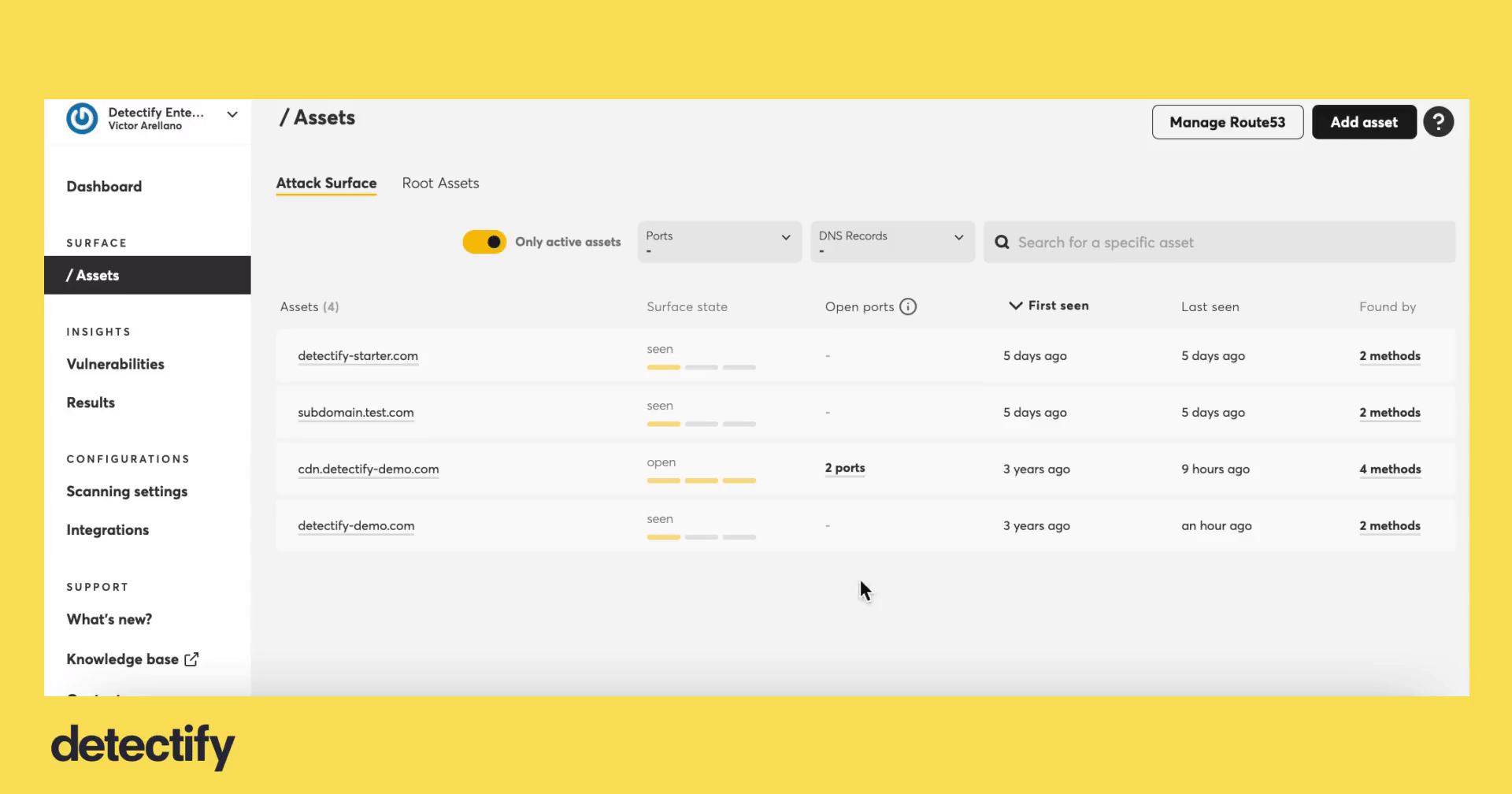TL/DR We’ve shipped several new features to improve the attack surface view, which includes filtering by DNS record type and viewing DNS details about an Internet-facing asset.
Complete overview of exposed assets
Taking action on your attack surface requires a complete overview of what is exposed. This includes details such as open – and previously open! – ports, DNS records, and when the asset was last seen. These details help security teams respond more effectively to issues as they occur in production.
It’s now possible for Surface Monitoring customers to drill down into an asset with the new Details page, which you can access by selecting an asset from the Attack Surface view.

Filtering by DNS record now possible
Your attack surface is made of many Internet-facing assets, including different DNS record types. Previously, it wasn’t possible to filter the attack surface view by the DNS record type, such as CNAME or A. This filtering limitation meant security teams had to verify the record type outside of the tool which is time-consuming. Now, users can filter the attack surface view by DNS record type.

Comprehensive DNS details
There are times when security teams need to drill deeper into an Internet-exposed asset to uncover what DNS properties can be found on a subdomain. This information is particularly useful for security teams who need to investigate anomalies or risks that may be present on their attack surface, such as subdomain takeovers due to dangling DNS records. Users can now view details in a single place by viewing the DNS Records page.

Tips from our product team:
- Wondering how we discover and continuously monitor ports? Read our knowledge base article on ports to learn more.
- Not sure what information we enrich assets with? This knowledge base article will help you understand everything you need to know about assets.
- Is this the first time you’re learning about the Attack Surface view? Check out our previous release notes to learn more.
Join our team
We’re hiring engineers, product managers, sales, & more! Learn more.








